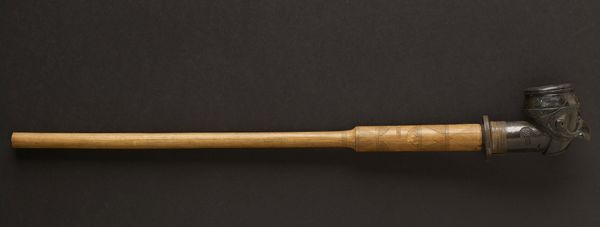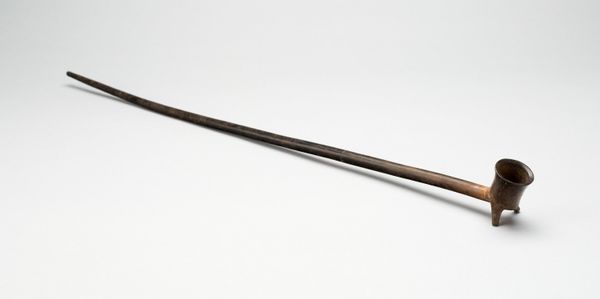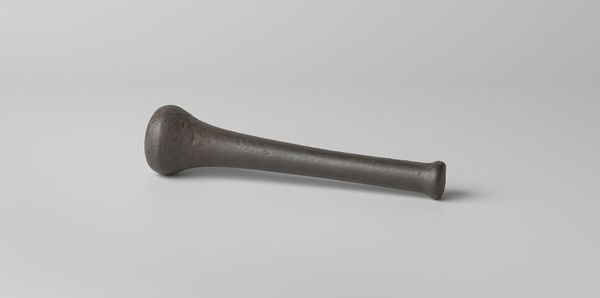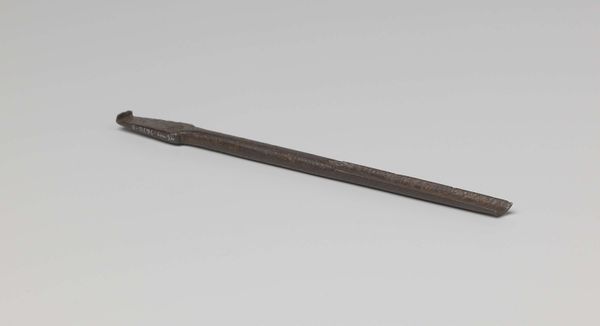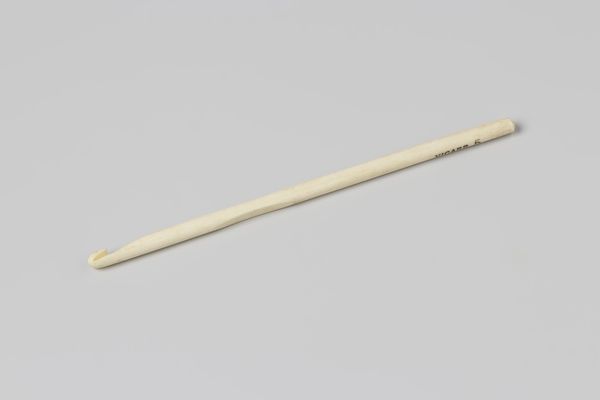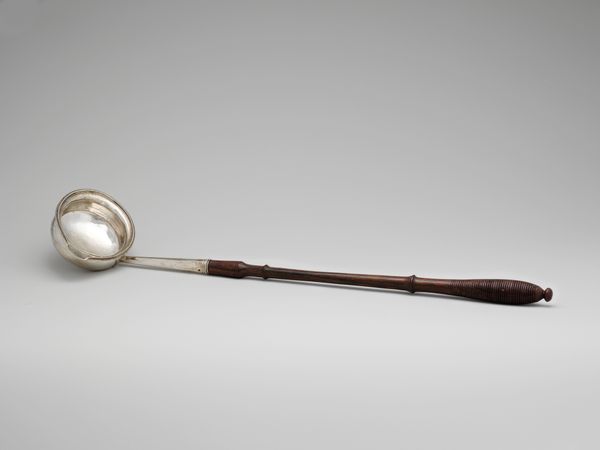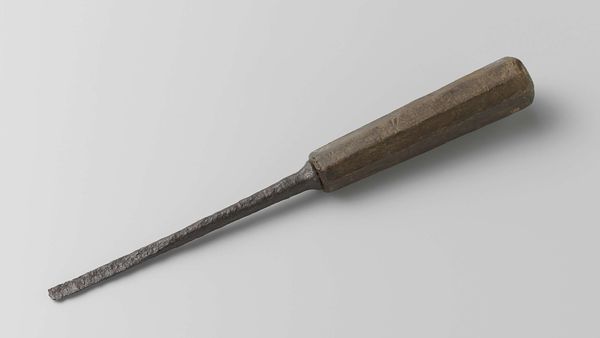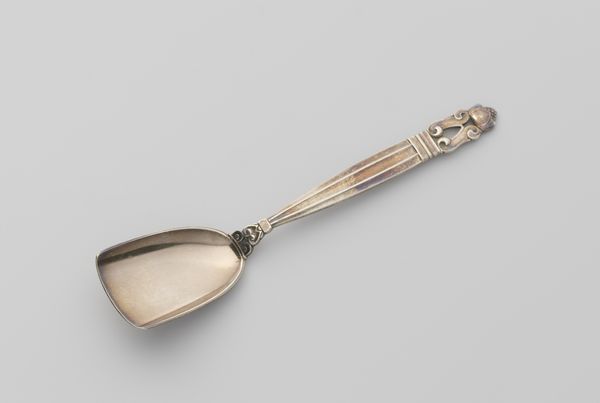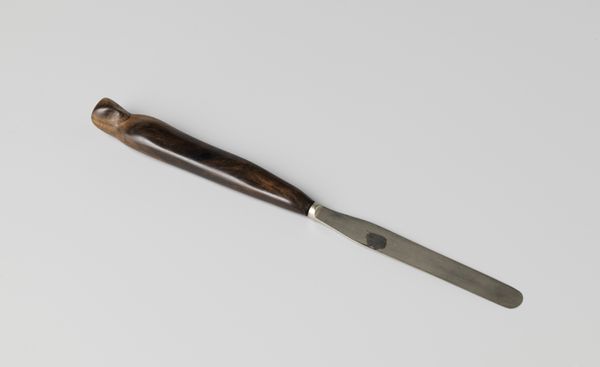
ceramic, earthenware
#
ceramic
#
earthenware
Dimensions: length 7.3 cm, diameter 0.8 cm
Copyright: Rijks Museum: Open Domain
Editor: This is an earthenware pipe made by Goedewaagen Gouda, dating from around the 19th century. There's a delicacy in the details, and I'm intrigued by what this simple object might tell us about the culture that produced it. How would you interpret its significance? Curator: As a historian, I see this pipe not just as an object, but as a vessel carrying a rich social and cultural history. In the 19th century, tobacco use was deeply ingrained in many societies, wasn't it? And the act of smoking, especially through ornate pipes, was often imbued with ritual and social meaning. How do you think the pipe’s design reflected the societal status or aspirations of its owner? Editor: Perhaps it reflects a comfortable middle class? It’s decorative, with the Goedewaagen mark visible, so it signifies some investment in quality. However, earthenware is relatively common, not like porcelain, for example. Curator: Exactly. The material and maker's mark also give us clues about production and consumption patterns of the time. Goedewaagen was clearly marketing to a certain segment. The act of smoking became closely intertwined with the burgeoning industrial culture, didn’t it? We begin to observe the way manufacturers advertise pleasure or habit with increasing brand awareness. How do you feel knowing this everyday object carried so much complexity? Editor: It makes me see ordinary objects in museums with fresh eyes! Now I'm wondering how consumer culture shaped art back then. Curator: Precisely! And that understanding is key to unlocking layers of meaning within the art. It changes how you understand power structures too, doesn't it?
Comments
No comments
Be the first to comment and join the conversation on the ultimate creative platform.
